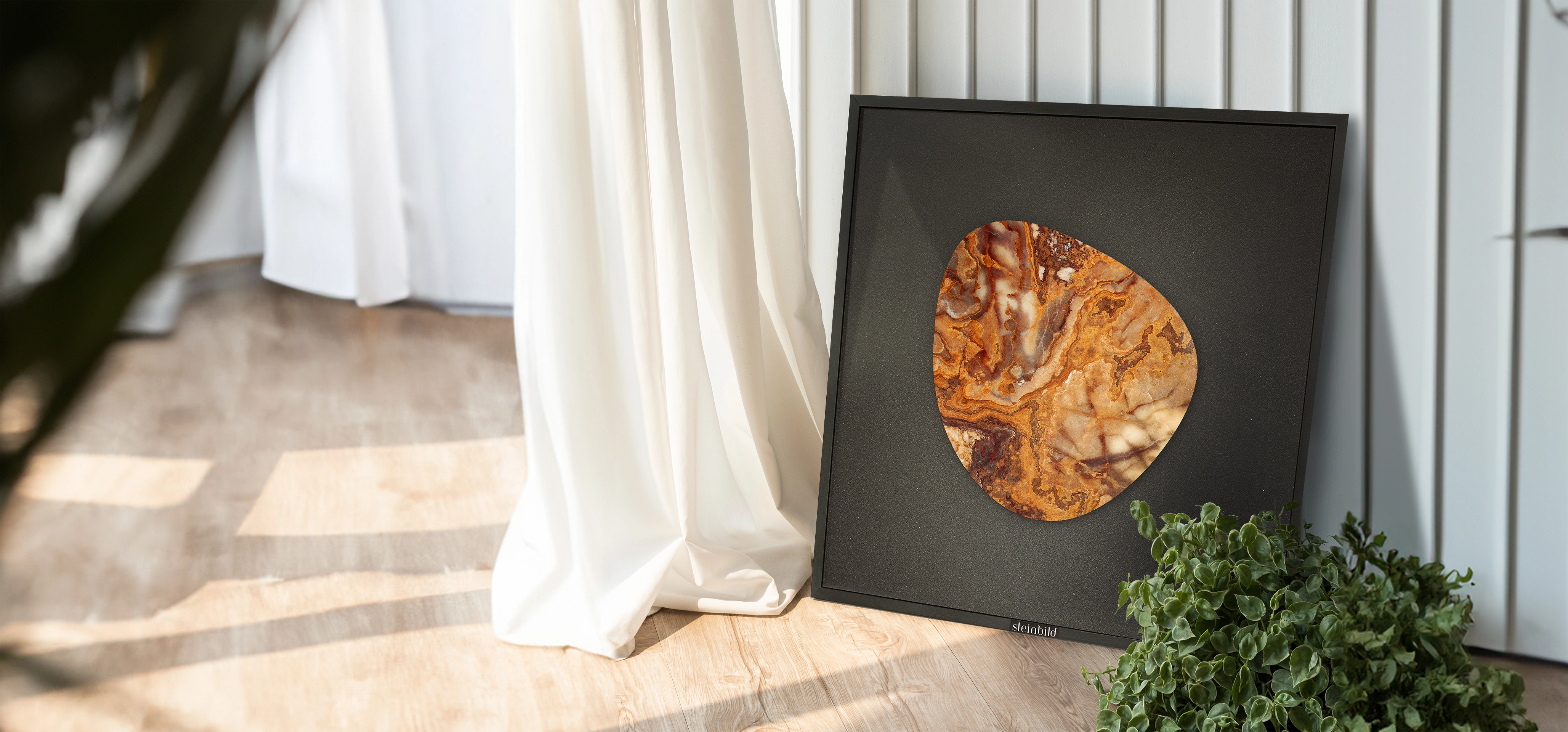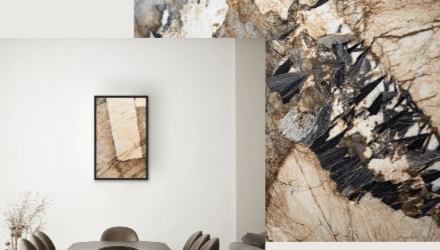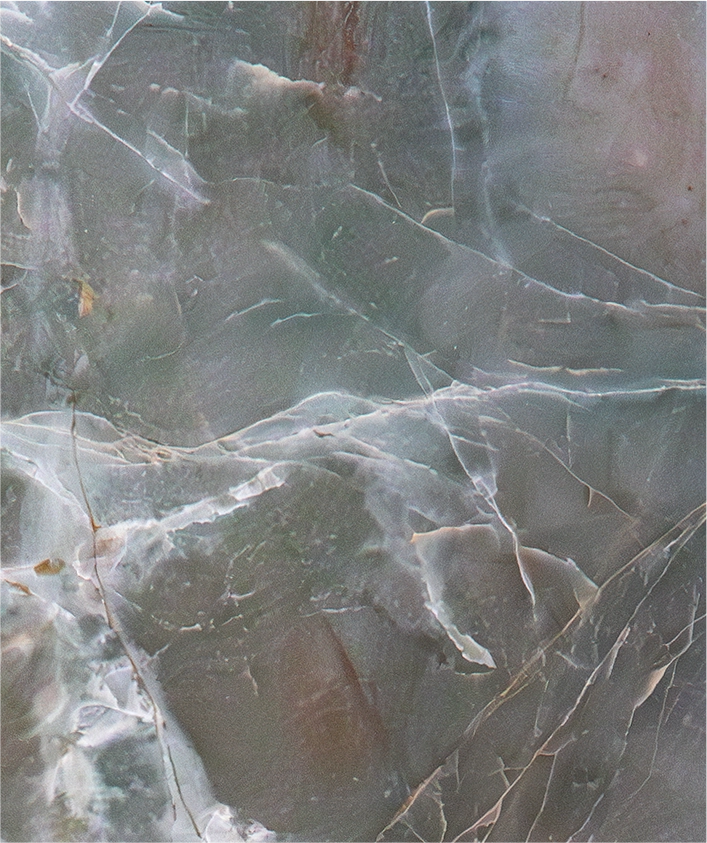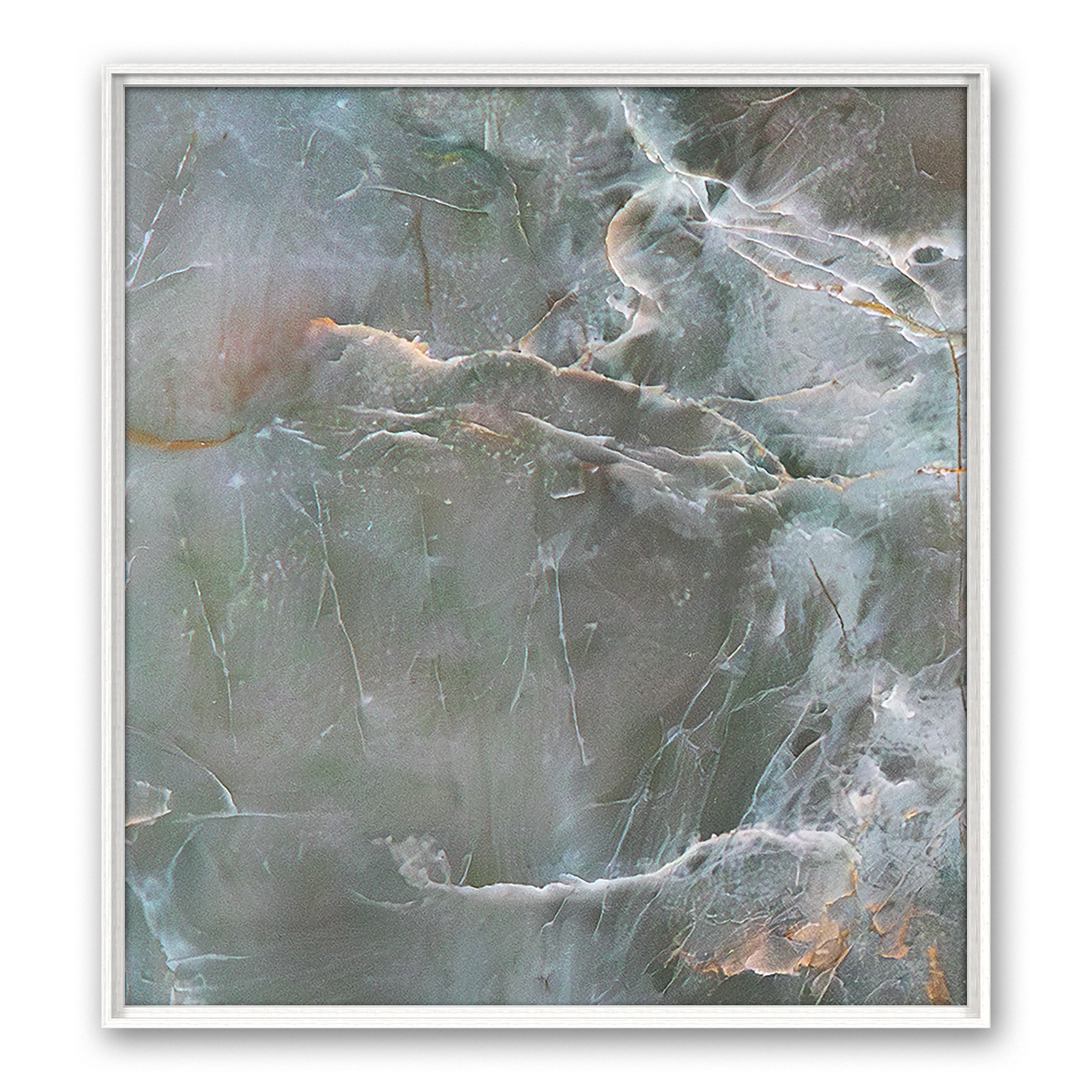This Steinbild has already found an owner.
| Age: | 150 |
|---|---|
| Alignment: | Upright |
| Colour shade: | Brown, Green, Grey |
| Grain: | Veined |
| Mirror image: | No |
| Size category: | M |
| Topics: | Jungle, Landscape |
At the time when the natural stone of this STEINBILD was formed, mountain building took place around the Pacific Ocean. Subduction of the Pacific plates started the unfolding of the Andes. Regression in Central Europe due to the recession of the sea. Pangaea finally broke apart.
Mineralogy
The first flowering plants emerged and the high rainfall ensured expansion of the plant world. This created dense, lush tropical forests with more flowering plants. Due to the strong reef formation, hexacorals, mussels, crinoids and echinoderms appeared. In addition, the Archaeopteryx (prehistoric bird) is well developed with feathers and skeleton during this time.

150 million years
Rock age
Quartzite
Type of rock
Quartz, admixtures of colouring ores
Main constituent
At the time when the natural stone of this STEINBILD was formed, mountain building took place around the Pacific Ocean. Subduction of the Pacific plates started the unfolding of the Andes. Regression in Central Europe due to the recession of the sea. Pangaea finally broke apart.
Mineralogy
The first flowering plants emerged and the high rainfall ensured expansion of the plant world. This created dense, lush tropical forests with more flowering plants. Due to the strong reef formation, hexacorals, mussels, crinoids and echinoderms appeared. In addition, the Archaeopteryx (prehistoric bird) is well developed with feathers and skeleton during this time.

150 million years
Rock age
Quartzite
Type of rock
Quartz, admixtures of colouring ores
Main constituent






















